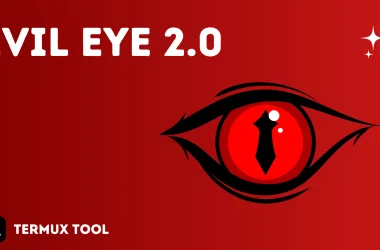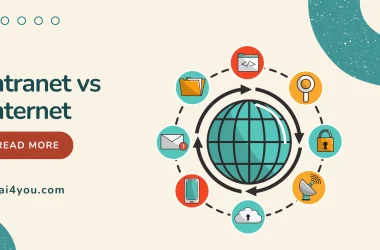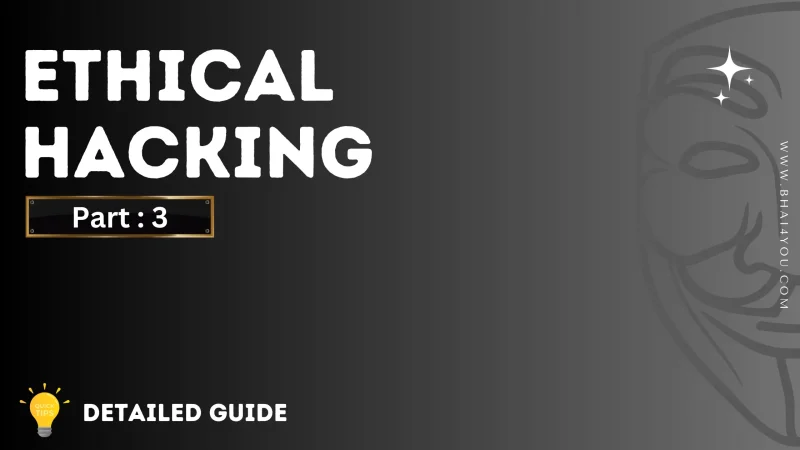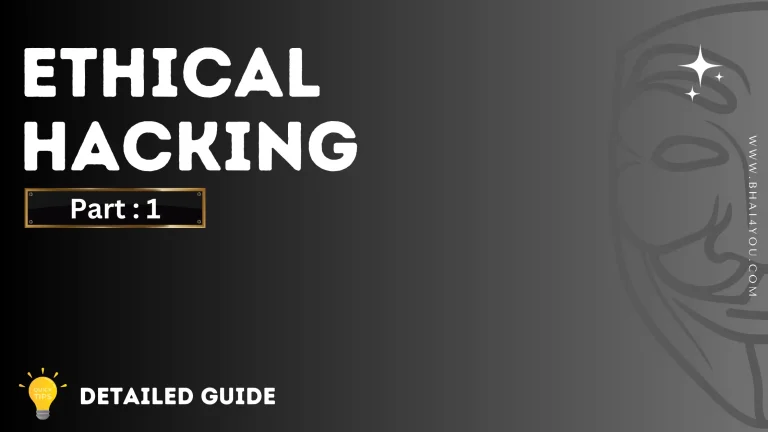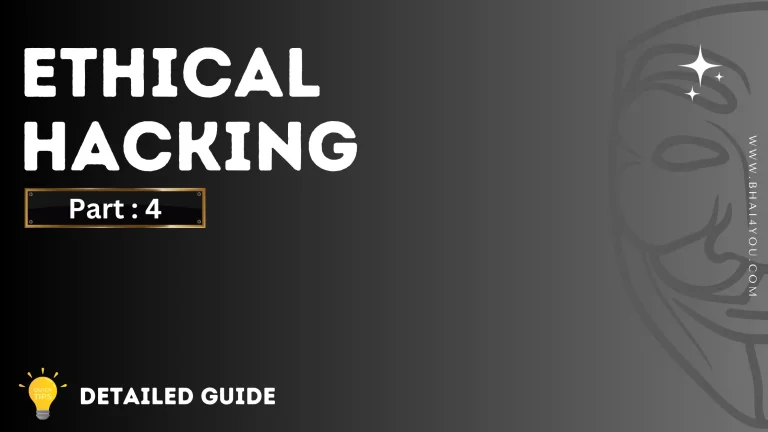Famous Hackers
There have been several famous hackers throughout history, known for their exceptional skills, contributions to the hacking community, or for their involvement in high-profile cyber incidents.
Table of Contents :
Kevin Mitnick

Once one of the FBI’s most wanted, Mitnick gained unauthorized access to numerous computer systems. After serving prison time, he became a cybersecurity consultant.
Kevin Mitnick, born on August 6, 1963, gained notoriety as one of the most infamous hackers in the late 20th century. His hacking exploits, which included unauthorized access to numerous high-profile computer systems, led to his classification as a cybercriminal.
Mitnick’s hacking journey began in the 1970s and 1980s when he gained unauthorized access to computer systems out of curiosity. His skills evolved, and he became adept at social engineering – manipulating individuals to divulge confidential information.
In the mid-1990s, Mitnick became the subject of an intense manhunt by the FBI. His ability to evade capture for two and a half years added an air of mystique to his persona. The FBI labeled him as one of the “most wanted” computer criminals.
Mitnick’s hacking exploits included infiltrating companies like Nokia, Fujitsu, and Motorola. His actions were characterized by a desire for knowledge rather than malicious intent, and he often described himself as a “hacker in the pursuit of knowledge.“
Mitnick authored several books, including “The Art of Deception” and “Ghost in the Wires,” where he shared insights into hacking, social engineering, and cybersecurity. His speaking engagements and media appearances helped demystify hacking while emphasizing the importance of robust security measures.
Kevin Mitnick’s story is a testament to personal redemption and the potential for positive transformation. His experiences highlight the thin line between black-hat hacking and ethical cybersecurity practices. Today, Mitnick continues to contribute to the cybersecurity landscape, using his past experiences to educate and inspire others to prioritize digital security.
Adrian Lamo

Known as the “Homeless Hacker” Lamo gained attention for turning in Chelsea Manning, a U.S. Army intelligence analyst who leaked classified documents to WikiLeaks.
Adrian Lamo, born on February 20, 1981, was a controversial figure in the hacking community, gaining notoriety for his involvement in exposing Chelsea Manning’s leak of classified documents.
Lamo, originally from Wichita, Kansas, displayed an early interest in computer systems and hacking. He gained recognition for infiltrating high-profile targets, earning him the moniker “Homeless Hacker” due to his transient lifestyle.
his most significant act occurred in 2010 when he reported Chelsea Manning, a U.S. Army intelligence analyst, to the authorities. Manning had leaked a vast amount of classified documents to WikiLeaks, exposing controversial military actions and diplomatic communications.
Lamo’s decision to turn Manning in sparked intense debate within the hacking and activist communities. Some saw him as a whistleblower betrayer, while others believed he acted out of a sense of duty to prevent potential harm arising from the leaked information.
his role in Manning’s arrest brought him under scrutiny. While Manning faced a lengthy prison sentence, Lamo himself became a divisive figure. He faced criticism for betraying the hacker ethos of loyalty and solidarity.
Adrian Lamo died on March 14, 2018, under mysterious circumstances. His death raised questions, and some speculated about its connection to his role in the Manning case. Lamo’s legacy remains complex, reflecting the ethical dilemmas inherent in the world of hacking, cybersecurity, and whistleblowing.
Adrian Lamo’s story continues to be a topic of discussion within the hacking and cybersecurity communities, serving as a reminder of the moral complexities that arise when individuals with hacking skills find themselves at the intersection of legality, ethics, and personal responsibility.
Gary McKinnond

A British hacker, McKinnon infiltrated 97 U.S. military and NASA computers, claiming he was searching for evidence of UFOs and free energy technology. The U.S. sought his extradition, but it was ultimately blocked.
Gary McKinnon, born on February 10, 1966, is a British hacker known for his high-profile intrusions into U.S. military and NASA computer systems. His actions were motivated by an unusual quest for information related to UFOs and extraterrestrial technology.
Gary McKinnon, diagnosed with Asperger’s syndrome, a form of autism, displayed an early interest in computers. He became fascinated with the idea of uncovering government secrets related to UFOs and free energy technology.
In the early 2000s, McKinnon conducted a series of intrusions into U.S. military and NASA computers. His goal was to find evidence of UFOs and advanced propulsion systems, driven by a belief in government cover-ups of extraterrestrial technologies. His hacking activities included gaining unauthorized access to computers at institutions such as the Pentagon.
McKinnon’s exploits exposed vulnerabilities in U.S. military and government computer systems, highlighting the importance of robust cybersecurity measures. His case prompted a reevaluation of security protocols to prevent similar intrusions.
Chelsa Manning

While not a traditional hacker, Manning leaked a vast amount of classified information to WikiLeaks, including diplomatic cables and military documents, leading to one of the most significant leaks in U.S. history.
Chelsea Manning, born on December 17, 1987, is a former U.S. Army intelligence analyst who gained international attention for leaking classified documents to WikiLeaks. Manning’s actions, while controversial, sparked debates on government transparency, whistleblowing, and the balance between national security and the public’s right to know.
Chelsea Manning, formerly known as Bradley Manning, enlisted in the U.S. Army in 2007. In 2010, while stationed in Iraq, Manning had access to classified military and diplomatic information.
In early 2010, Manning leaked a vast trove of classified documents to WikiLeaks. The leaked materials included the “Collateral Murder” video showing a U.S. Apache helicopter attack in Baghdad, as well as diplomatic cables and military reports. The disclosures exposed controversial military actions and diplomatic discussions.
Manning was arrested in May 2010 and faced charges under the Espionage Act and other offenses. In 2013, Manning was convicted on multiple counts, including violations of the Espionage Act, and sentenced to 35 years in prison.
During the trial, Manning revealed her gender identity as female and expressed a desire to undergo gender transition. In 2013, she legally changed her name to Chelsea Manning. The U.S. Army initially resisted providing gender transition-related healthcare, but Manning’s legal battles and advocacy efforts led to policy changes.
In January 2017, in the final days of his presidency, Barack Obama commuted Manning’s sentence, reducing it to the time she had already served. Manning was released from prison in May 2017.
Since her release, Manning has been an advocate for government transparency, LGBTQ+ rights, and civil liberties. She has spoken at conferences and events, sharing her experiences and perspectives on whistleblowing, privacy, and the impact of government secrecy on democracy.
Julian Assange

The founder of WikiLeaks, Assange is known for publishing classified and sensitive information. He has been involved in various legal controversies and is sought by the U.S. government for his role in obtaining and publishing classified documents.
Julian Assange, born on July 3, 1971, is an Australian activist, journalist, and founder of WikiLeaks, a platform known for publishing classified and sensitive information. Assange’s work has been praised by some as a champion of transparency and criticized by others who argue that he jeopardizes national security.
Assange founded WikiLeaks in 2006 with the mission of promoting government transparency by publishing classified and confidential documents. The platform gained international attention in 2010 with the release of a significant trove of U.S. military and diplomatic cables.
One of WikiLeaks’ most notable releases was “Cablegate,” which included a vast number of diplomatic cables. The documents exposed sensitive diplomatic discussions, leading to widespread condemnation and praise. WikiLeaks also published material related to the wars in Iraq and Afghanistan.
In 2010, Assange faced allegations of sexual misconduct in Sweden. Fearing extradition to the United States and potential charges related to his work with WikiLeaks, Assange sought asylum in the Embassy of Ecuador in London in 2012. He remained there for almost seven years.
Assange’s work has been both praised and criticized. Supporters view him as a journalist and advocate for transparency, while critics argue that his actions endanger lives and compromise national security. The release of classified information has triggered diplomatic crises and strained relations between nations.
During his time in prison in the UK, Assange faced health concerns, and his supporters expressed worry about his well-being. The legal battles surrounding his potential extradition raised questions about the treatment of whistleblowers and the limits of press freedom.
Julian Assange’s legacy is complex, reflecting the evolving landscape of journalism, whistleblowing, and government transparency in the digital age. His case has become a symbol of the tensions between free speech, national security, and the responsibilities of those who seek to expose classified information.
Anonymous

An infamous hacker collective, Anonymous has been involved in various high-profile cyber-activism campaigns. Their members are often decentralized, and they use online platforms to coordinate their actions.
Anonymous is a loosely organized and decentralized collective of individuals that emerged in the early 2000s. Members of Anonymous, often referred to as “Anons,” are united by a shared commitment to various causes, including activism, freedom of speech, and resistance against perceived injustices.
Anonymous originated on internet forums such as 4chan in the mid-2000s. The collective adopted the Guy Fawkes mask, popularized by the graphic novel and film “V for Vendetta” as a symbol of their movement. The mask represents resistance against authoritarianism and censorship.
Anonymous is known for its various operations and campaigns, often executed under the banner of “Operation” followed by a specific cause or theme. These can range from protests against government censorship and corporate greed to support for social justice movements. Notable operations include Project Chanology against Scientology, Operation Payback in support of WikiLeaks, and involvement in the Arab Spring protests.
Some members of Anonymous engage in hacktivism, using their skills to launch cyber attacks against websites and organizations they perceive as adversaries. Distributed Denial of Service (DDoS) attacks and website defacements have been common tactics used by Anonymous to make a statement or disrupt services temporarily.
The decentralized nature of Anonymous poses challenges for law enforcement in identifying and apprehending individuals associated with its activities. Actions taken under the Anonymous banner are often attributed to the wider collective rather than specific individuals.
The methods employed by Anonymous, particularly the use of hacking and cyber attacks, have sparked ethical debates. While some view Anonymous as a force for good in challenging oppressive regimes and corporate wrongdoing, others criticize their methods as vigilante-like and potentially harmful.
Anonymous has evolved over the years, adapting to changes in technology and global events. Its influence has waned at times, only to resurface with new campaigns or operations. The collective continues to be a symbol of online activism and resistance.
Lizard Squad

This hacking group gained attention for targeting gaming networks, such as PlayStation Network and Xbox Live, disrupting services and causing widespread inconvenience.
Lizard Squad is a hacking group known for its disruptive cyber-attacks, particularly targeting online gaming networks and services. The group gained infamy for launching distributed denial-of-service (DDoS) attacks, temporarily taking down popular gaming platforms and causing widespread disruptions.
Lizard Squad first gained attention in 2014 when it launched high-profile DDoS attacks against gaming networks, including PlayStation Network (PSN) and Xbox Live. These attacks resulted in service outages, frustrating gamers and drawing significant media coverage.
One of Lizard Squad’s most notable incidents occurred on Christmas Day in 2014 when it successfully took down both PSN and Xbox Live. The attacks disrupted online gaming for users around the world during the holiday season, leading to increased public and law enforcement attention.
Lizard Squad was known for its brazen and disruptive tactics. In addition to DDoS attacks, the group would also engage in hacking, defacement of websites, and making bomb threats, sometimes to airlines or public figures, through social media channels.
Beyond their own attacks, Lizard Squad offered “stresser” or DDoS-for-hire services, allowing individuals to pay for their services to launch attacks against specific targets. This contributed to the proliferation of DDoS attacks, making them more accessible to individuals without advanced technical skills.
Lizard Squad’s motivations were not always clear, and the group’s actions often appeared to be driven more by a desire for attention and chaos rather than any specific ideology. Critics argued that their disruptive attacks had little political or social justification.
While the original Lizard Squad may have diminished, the tactics they popularized continue to be adopted by other hacking groups, emphasizing the ongoing challenges in defending against cyber threats in the digital age.
Kevin Poulsen

Known as “Dark Dante” Poulsen was involved in various hacking activities, including taking over phone lines to win a radio contest. After serving a prison sentence, he became a journalist and author.
Kevin Poulsen, born on November 30, 1965, is a former black-hat hacker turned journalist and author. He gained notoriety in the 1980s for his hacking activities but later transformed his life, becoming a respected figure in the field of cybersecurity.
In the late 1980s, Poulsen, also known by his online alias “Dark Dante” engaged in various hacking activities. One of his notable exploits included taking over phone lines to win a radio contest, where he secured a brand new Porsche. His hacking activities drew the attention of law enforcement.
In 1991, Poulsen was arrested and faced charges related to his hacking activities. His arrest came after he had been on the run for several years, during which he became one of the FBI’s most-wanted hackers. Poulsen eventually pleaded guilty to several counts, including wire and computer fraud, and served a prison sentence.
After serving his sentence, Poulsen decided to turn his life around. He pursued a career in journalism and became a respected investigative reporter. Poulsen’s unique perspective, having been deeply involved in hacking culture, allowed him to provide insights into the world of cybersecurity.
Kevin Poulsen has worked for various media outlets, including Wired News, where he covered technology, cybersecurity, and privacy issues. His articles delved into topics such as online crime, hacking, and digital rights. Poulsen’s work helped shed light on the evolving landscape of cybersecurity threats.
In addition to his journalistic work, Poulsen is an author. One of his notable books is “Kingpin: How One Hacker Took Over the Billion-Dollar Cybercrime Underground” published in 2011. The book explores the story of Max Butler, a cybercriminal who engaged in credit card fraud and identity theft.
Poulsen has continued to focus on cybersecurity issues, advocating for digital rights and privacy. His background as a former hacker gives him a unique perspective on the challenges and complexities of securing online systems.
Kevin Poulsen’s journey from a notorious hacker to a respected journalist highlights the potential for personal transformation. His work contributes to the public’s understanding of cybersecurity issues, emphasizing the importance of ethical behavior in the digital realm.
Kevin Poulsen’s story serves as a compelling example of how individuals with a history in hacking can use their experiences to positively contribute to the field of cybersecurity and journalism.
Robert Tappan Morris

Morris is known for creating the first computer worm, the Morris Worm, in 1988. The worm spread across the early internet, causing widespread disruption.
Robert Tappan Morris, born on November 8, 1965, is a computer scientist and entrepreneur known for creating the Morris Worm, one of the first computer worms to spread widely across the internet.
Robert Tappan Morris earned his bachelor’s degree from Harvard University and later pursued graduate studies at Cornell University. He developed an interest in computer science and became involved in the emerging field of computer security.
In 1988, while a graduate student at Cornell, Morris developed the Morris Worm, intending to gauge the size of the internet. However, due to a programming error, the worm began to replicate excessively, causing widespread disruptions. The Morris Worm exploited vulnerabilities in Unix systems, slowing down or rendering affected computers unusable.
The Morris Worm had unintended consequences, infecting thousands of computers and causing significant disruptions. It was one of the first instances of a large-scale, self-replicating malware spreading across the internet. The incident drew attention to the importance of computer security and led to increased efforts to secure networks.
Robert Tappan Morris became the first person to be tried and convicted under the Computer Fraud and Abuse Act (CFAA) in the United States. In 1990, he was sentenced to probation, community service, and fined. The Morris Worm incident marked a turning point in discussions around computer security and legislation to address cybercrimes.
Despite the legal consequences of the Morris Worm incident, Robert Tappan Morris continued his career in computer science. He earned a Ph.D. from Harvard University and held positions at several prestigious institutions, including the Massachusetts Institute of Technology (MIT).
Morris later co-founded Y Combinator, a renowned startup accelerator. Y Combinator has played a significant role in supporting and mentoring numerous successful startups, contributing to the entrepreneurial ecosystem.
Robert Tappan Morris has made significant contributions to both academia and industry. He has worked on various projects related to computer security and distributed systems. Morris has held positions at MIT, Stanford University, and other institutions, contributing to research and advancements in computer science.
Albert Gonzalez

A former U.S. Secret Service informant, Gonzalez later turned to hacking and led a group responsible for stealing millions of credit card numbers. He was involved in one of the largest identity theft cases in U.S. history.
Albert Gonzalez, born on June 13, 1981, gained notoriety as a prominent cybercriminal involved in major credit card and data breaches. His criminal activities targeted numerous companies, resulting in one of the largest identity theft cases in U.S. history.
Albert Gonzalez began his hacking activities in the late 1990s, initially exploring vulnerabilities in computer networks. He quickly became involved in more malicious activities, including credit card fraud and hacking into corporate databases.
Gonzalez was a key figure in the ShadowCrew, an online forum where cybercriminals traded stolen credit card information, identities, and hacking techniques. This community became a hub for various illegal activities and contributed to the growth of the underground cybercrime ecosystem.
One of Gonzalez’s most notorious exploits was his involvement in a series of high-profile cyberattacks targeting major retail and financial companies, including TJX Companies, Heartland Payment Systems, and others. These attacks resulted in the theft of millions of credit card numbers and personal information.
In 2008, Gonzalez was arrested by the U.S. Secret Service for his role in the cyberattacks. Following his arrest, he began cooperating with federal authorities, providing information about his accomplices and sharing insights into the methods used by cybercriminals. This cooperation marked a rare instance of a cybercriminal assisting law enforcement.
In 2010, Gonzalez was sentenced to 20 years in prison after pleading guilty to multiple charges, including conspiracy, wire fraud, and identity theft. The severity of his sentence reflected the scale and impact of the data breaches he orchestrated.
The cyberattacks orchestrated by Gonzalez had far-reaching consequences, affecting millions of individuals and costing companies significant financial losses. The breaches underscored the vulnerabilities in the payment card industry and prompted a renewed focus on improving cybersecurity measures.
Albert Gonzalez’s case serves as a cautionary tale about the potential consequences of cybercrime. The widespread impact of his activities prompted increased efforts to strengthen cybersecurity practices, especially in industries handling sensitive financial information.
Jonathan James

Jonathan James, born on December 12, 1983, was a computer hacker known for his involvement in various cybercrimes during the late 1990s and early 2000s. He gained notoriety as one of the youngest individuals to be convicted of serious computer crimes in the United States.
Jonathan James demonstrated exceptional skills in computer programming and hacking from a young age. By the age of 15, he had already gained notoriety for his cyber exploits.
In 1999, at the age of 15, James hacked into the computer systems of NASA (National Aeronautics and Space Administration). His actions led to the theft of software worth approximately $1.7 million and caused disruptions in NASA’s computer networks. James claimed that his motive was to uncover evidence of UFOs, though authorities viewed his actions as a serious cybercrime.
In 2000, Jonathan James was arrested and charged with several cybercrimes related to the NASA hack. He pleaded guilty to unauthorized access, interception of communication, and other charges. Despite his young age, James received a six-month sentence in a juvenile detention center and was ordered to pay restitution.
After serving his sentence, James continued to be involved in the hacking community. In 2007, he was investigated in connection with a high-profile data breach at TJX Companies, a major retail corporation. However, James maintained his innocence in that case.
On May 18, 2008, at the age of 24, Jonathan James was found dead in his home from a self-inflicted gunshot wound. His death sparked discussions about the impact of legal actions against hackers and the potential toll it can take on individuals involved in cybercrimes.
Jonathan James’ story highlights the complex and often challenging relationship between hacking, legal consequences, and the psychological toll on individuals involved in cybercrimes. His early talents in computer programming contrasted with the legal troubles he faced, raising questions about the appropriate handling of young individuals engaged in hacking activities.
Michael Calce

Michael Calce, also known by his online alias “Mafiaboy” gained notoriety in 2000 for launching a series of high-profile distributed denial-of-service (DDoS) attacks against several major websites.
Michael Calce, a Canadian hacker, was only 15 years old when he orchestrated a series of cyberattacks in 2000. His primary motivation was to prove his hacking skills and gain notoriety within the online hacking community.
In February 2000, Calce launched a series of DDoS attacks against major websites, including Yahoo!, eBay, Amazon, and CNN. The attacks overwhelmed the targeted websites with a massive volume of traffic, causing widespread disruptions and outages.
The DDoS attacks orchestrated by Calce had a significant impact on the targeted websites, causing financial losses and highlighting vulnerabilities in the infrastructure of prominent online platforms. The attacks also prompted increased awareness of the potential threat posed by DDoS attacks.
In April 2000, Canadian authorities, with assistance from the FBI, arrested Michael Calce. He pleaded guilty to 55 charges related to the cyberattacks, including unauthorized access to computer systems and mischief to data. Calce was sentenced to eight months of “open custody” in a youth group home, one year of probation, and a small fine.
After serving his sentence, Michael Calce became involved in ethical hacking and cybersecurity. He spoke publicly about his experiences, emphasizing the importance of responsible behavior in the digital realm. Calce’s story became a cautionary tale about the legal consequences of engaging in cybercrime.
Michael Calce’s actions and subsequent reflections highlight the potential for young individuals to be drawn into hacking for notoriety and recognition. His case underscores the importance of education, ethical hacking practices, and legal consequences in shaping the behavior of individuals within the cybersecurity community.
Albert Gonzalez

Mark Abene, also known by his online alias “Phiber Optik” is a prominent figure in the history of hacking and computer security. He gained notoriety in the 1980s and 1990s for his involvement in the hacker community.
In the late 1980s, Mark Abene became known for his hacking skills as part of the hacking group “The Legion of Doom.” The group was one of the early hacker collectives that explored the vulnerabilities of computer systems and telecommunication networks.
In 1991, Mark Abene, along with other members of The Legion of Doom, was arrested and faced charges related to unauthorized access to computer systems. The arrests were part of a larger crackdown on hackers by law enforcement during that time. Abene, along with some other members, ultimately reached a plea agreement.
After serving his sentence and paying fines, Mark Abene shifted his focus to legal and ethical pursuits within the field of computer security. He became an advocate for responsible hacking, emphasizing the importance of understanding vulnerabilities to improve overall cybersecurity.
Mark Abene leveraged his hacking experiences to become a respected expert in cybersecurity. His expertise lies in areas such as penetration testing, vulnerability assessment, and information security. Abene’s journey from a hacker to a cybersecurity professional reflects a broader trend of individuals transitioning from illegal activities to legal, ethical contributions in the field.
Abene has been involved in public speaking engagements and educational initiatives, sharing his experiences and insights into hacking, computer security, and the evolving landscape of cybersecurity threats. He has contributed to raising awareness about the importance of ethical hacking in securing digital systems.
Mark Abene’s legacy is multifaceted. He played a role in the early hacker community, contributing to the exploration of computer systems and telecommunications networks. His legal troubles marked a period of heightened scrutiny on hackers by law enforcement. However, Abene’s post-legal era contributions to cybersecurity underscore the potential for individuals with hacking skills to positively impact the field.
Albert Gonzalez

Matthew Bevan and Richard Pryce gained attention in the mid-1990s for their alleged involvement in hacking and information warfare activities.
Matthew Bevan and Richard Pryce were two young hackers from the United Kingdom who became known for their activities during the early days of the internet. They were associated with hacking collectives, including the notorious group called the “Legion of Hackers” or “LOH.“
In the mid-1990s, Bevan and Pryce were accused of breaking into computer systems belonging to various military and government entities, including the U.S. Air Force and NASA. They were suspected of unauthorized access and attempting to disrupt or tamper with military systems.
Their activities received significant attention after an article titled “The New Terrorists: Hackers and Information Warfare” was published in “Infowar” magazine in 1994. The article, written by journalist Winn Schwartau, claimed that Bevan and Pryce had infiltrated U.S. military systems and posed a serious threat to national security. The accuracy and extent of the reported activities have been a subject of debate.
The “Infowar” article and subsequent media coverage generated controversy, and some cybersecurity experts expressed skepticism about the claims made regarding Bevan and Pryce. Questions were raised about the accuracy of the information and whether the activities attributed to them were overstated.
Despite the media attention and accusations, Bevan and Pryce were not prosecuted for hacking-related charges. The lack of legal action fueled skepticism about the severity of their alleged activities. It is important to note that the legal landscape surrounding hacking and cybercrime was still evolving during that period.
The case of Matthew Bevan and Richard Pryce remains a somewhat enigmatic chapter in the history of hacking and information warfare. It highlights the challenges of accurately assessing the nature and impact of cyber threats, especially in the early days of the internet when public understanding of cybersecurity issues was limited.
Charlie Miller

In the realm of hacking and cybersecurity, few names shine as brightly as Charlie Miller. Renowned for his unparalleled skills and contributions to the field, Miller’s journey is a testament to the evolving landscape of digital security.
Charlie Miller, a computer security researcher, first gained widespread recognition for his extraordinary hacking talents. His exploits often centered around breaking into and exposing vulnerabilities in various software and operating systems.
Miller became a fixture in the cybersecurity community through his participation in the annual Pwn2Own competition. His adeptness at uncovering vulnerabilities and exploiting them for control over targeted systems showcased both the fragility of digital defenses and the prowess of a skilled ethical hacker.
Miller left an indelible mark on Apple Inc.’s products, particularly iOS. His demonstrations of successful exploits on iPhones highlighted the importance of robust security measures in the face of ever-evolving cyber threats.
Beyond traditional hacking domains, Miller extended his expertise to automotive security. His research revealed vulnerabilities in the software systems of modern vehicles, emphasizing the need for heightened security measures in the era of connected cars.
A prolific figure, Miller has authored influential books and research papers on hacking and cybersecurity. His work not only delves into the technical aspects of exploits but also serves as educational material for aspiring security professionals.
Charlie Miller’s journey led him to play a crucial role in corporate security. His tenure at Uber involved efforts to fortify the company’s technology infrastructure, contributing to the ongoing battle against cyber threats in the corporate world.
Charlie Miller’s legacy is one of pushing the boundaries of cybersecurity awareness. Through his hacking prowess, he has underscored the urgent need for robust defenses in an increasingly interconnected world. Miller’s contributions serve as a constant reminder of the importance of ethical hacking in safeguarding digital landscapes.
As the digital realm continues to evolve, Charlie Miller remains a dynamic force in ethical hacking advocacy. His journey—from uncovering vulnerabilities to fortifying digital systems—stands as an inspirational narrative in the ongoing quest for a more secure cyberspace.
Beyond his technical exploits, Miller has become an influential figure in educating the next generation of cybersecurity professionals. His insights, shared through public speaking engagements, continue to shape the discourse around ethical hacking and digital resilience.
Tsutomu Shimomura

Tsutomu Shimomura is a Japanese-American computer security expert who gained prominence for his role in pursuing and assisting law enforcement in the capture of infamous hacker Kevin Mitnick.
Tsutomu Shimomura is a renowned computer security expert and software developer. He has a background in computer science and has worked on various projects related to cybersecurity and cryptography.
One of the most notable chapters in Shimomura’s career unfolded when he became involved in tracking down Kevin Mitnick, a notorious hacker. In 1994, Mitnick gained unauthorized access to Shimomura’s computer systems, prompting Shimomura to collaborate with law enforcement to bring Mitnick to justice.
The pursuit and capture of Kevin Mitnick were documented in the book “Takedown” co-authored by Shimomura and journalist John Markoff. The book provides a detailed account of the events surrounding Mitnick’s hacking activities, Shimomura’s efforts, and the collaboration with law enforcement.
Shimomura’s expertise extends to education and research in the field of cybersecurity. He has been involved in academic and industry efforts to enhance cybersecurity awareness, techniques, and technologies.
Throughout his career, Shimomura has contributed to advancements in computer security. His work has focused on developing tools and techniques to enhance the protection of computer systems against unauthorized access and cyber threats.
Tsutomu Shimomura’s role in the pursuit and capture of Kevin Mitnick remains a significant chapter in the history of cybersecurity. The Mitnick case brought attention to the challenges of combating high-profile cybercriminals and the need for collaboration between the private sector and law enforcement.
While the Mitnick case is a notable part of his legacy, Shimomura’s ongoing contributions to cybersecurity research and education showcase his enduring commitment to the field. His insights and experiences contribute to the broader understanding of cybersecurity challenges and solutions.
HD Moore

HD Moore, born as H. D. Moore, is a prominent figure in the field of cybersecurity, renowned for his contributions to vulnerability research and the creation of Metasploit, a widely used penetration testing framework.
HD Moore emerged in the cybersecurity scene with a keen interest in hacking and vulnerability research. His early contributions showcased his technical prowess and curiosity about the security landscape.
One of HD Moore’s most significant contributions is the creation of the Metasploit Framework. Metasploit is an open-source penetration testing tool used for developing, testing, and executing exploit code against remote targets. It has become an essential tool for security professionals and ethical hackers.
Moore played a key role in leading the Metasploit Project, fostering the development of the framework and its community. The project’s collaborative nature has allowed security experts worldwide to contribute to a growing database of exploits and tools.
HD Moore continued his impact on the cybersecurity industry by working with Rapid7, a cybersecurity company. While at Rapid7, he contributed to the development of Nexpose, a vulnerability management and assessment solution.
Moore is known for his extensive vulnerability research, contributing to the identification and understanding of security weaknesses in various systems. He has been an advocate for responsible disclosure, emphasizing the importance of collaborating with vendors to address vulnerabilities.
HD Moore has authored books and whitepapers on cybersecurity topics, sharing his knowledge with the community. He has been a speaker at numerous conferences, providing insights into the latest trends, vulnerabilities, and defense strategies in the ever-evolving cybersecurity landscape.


